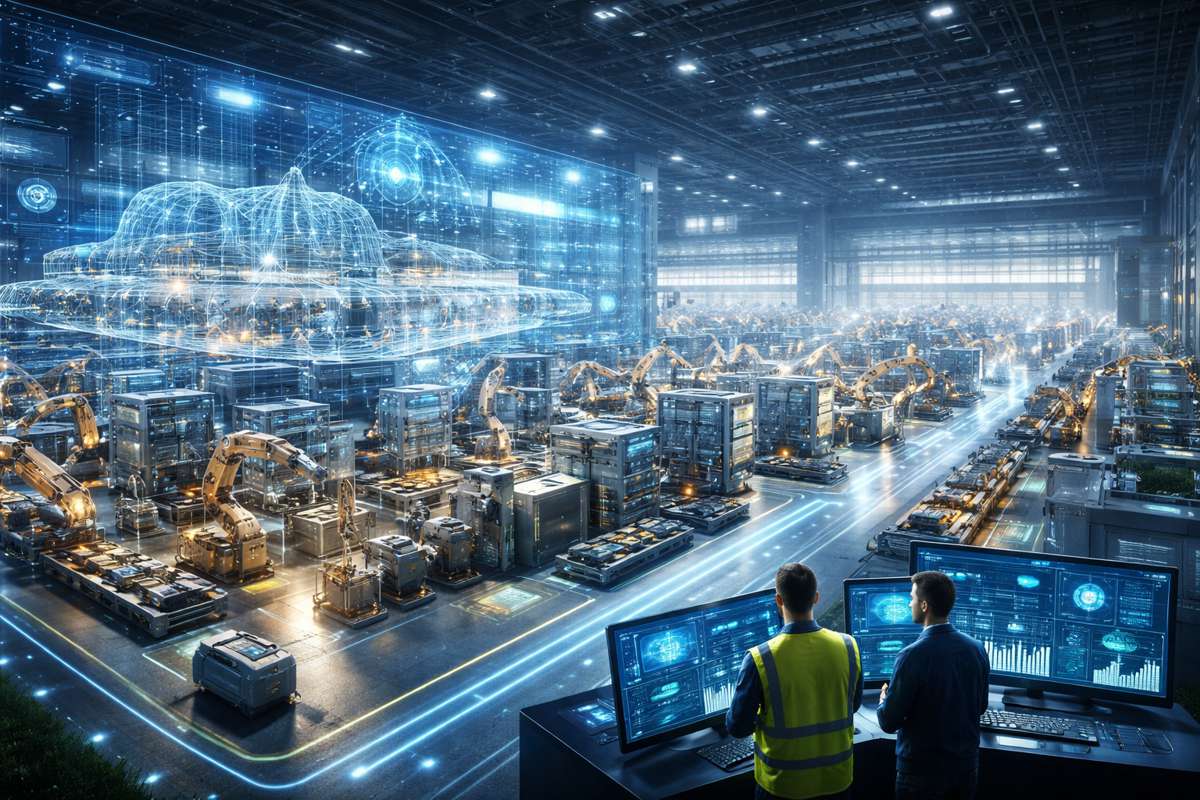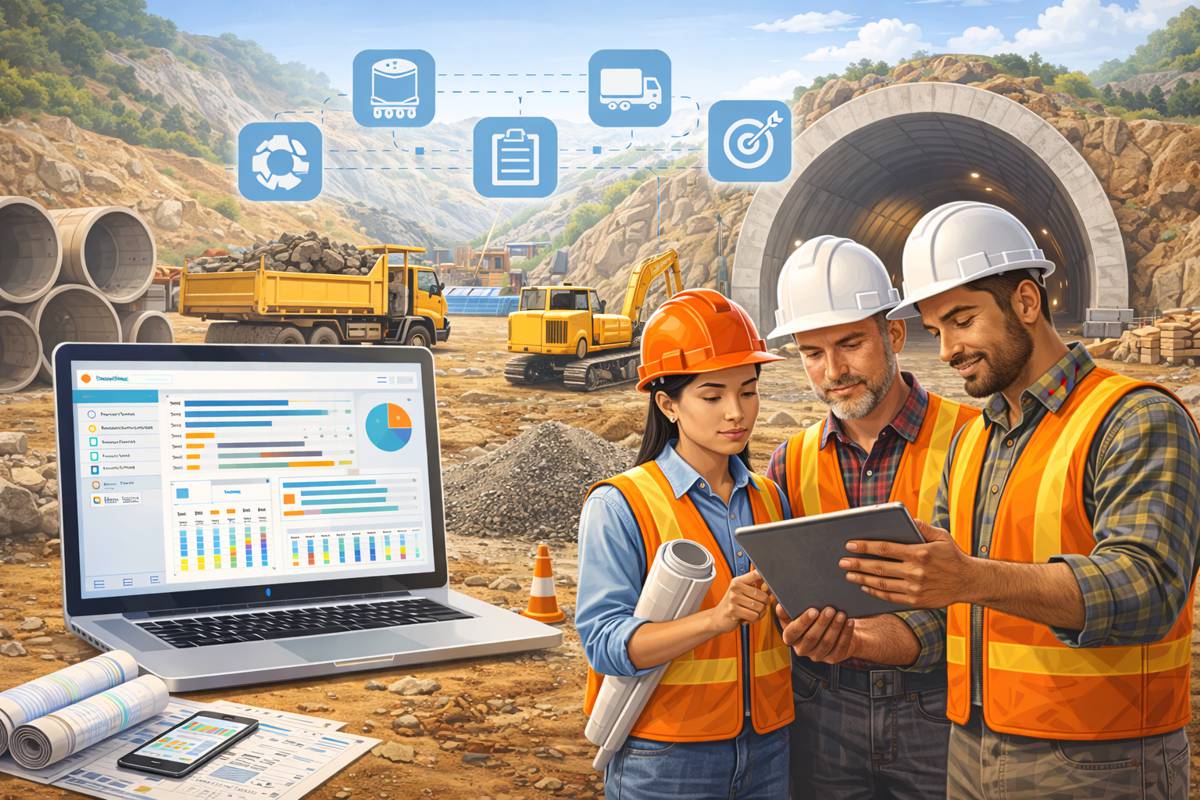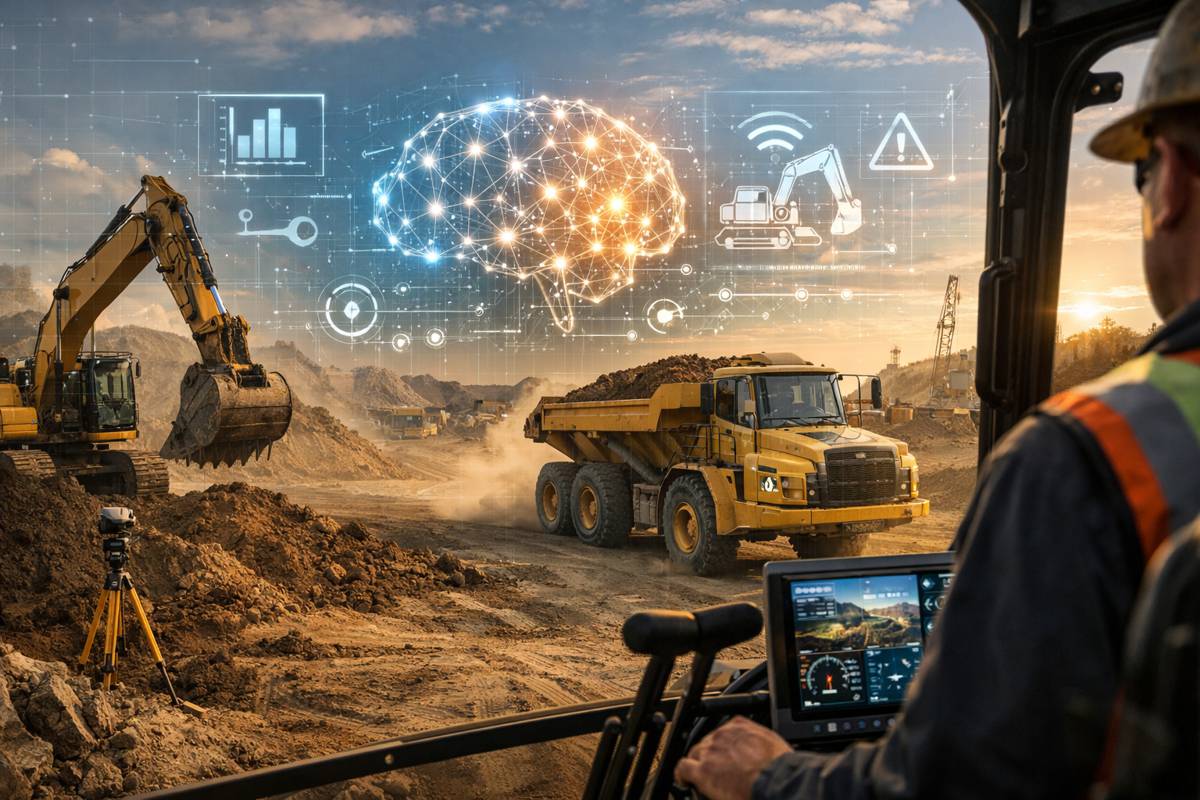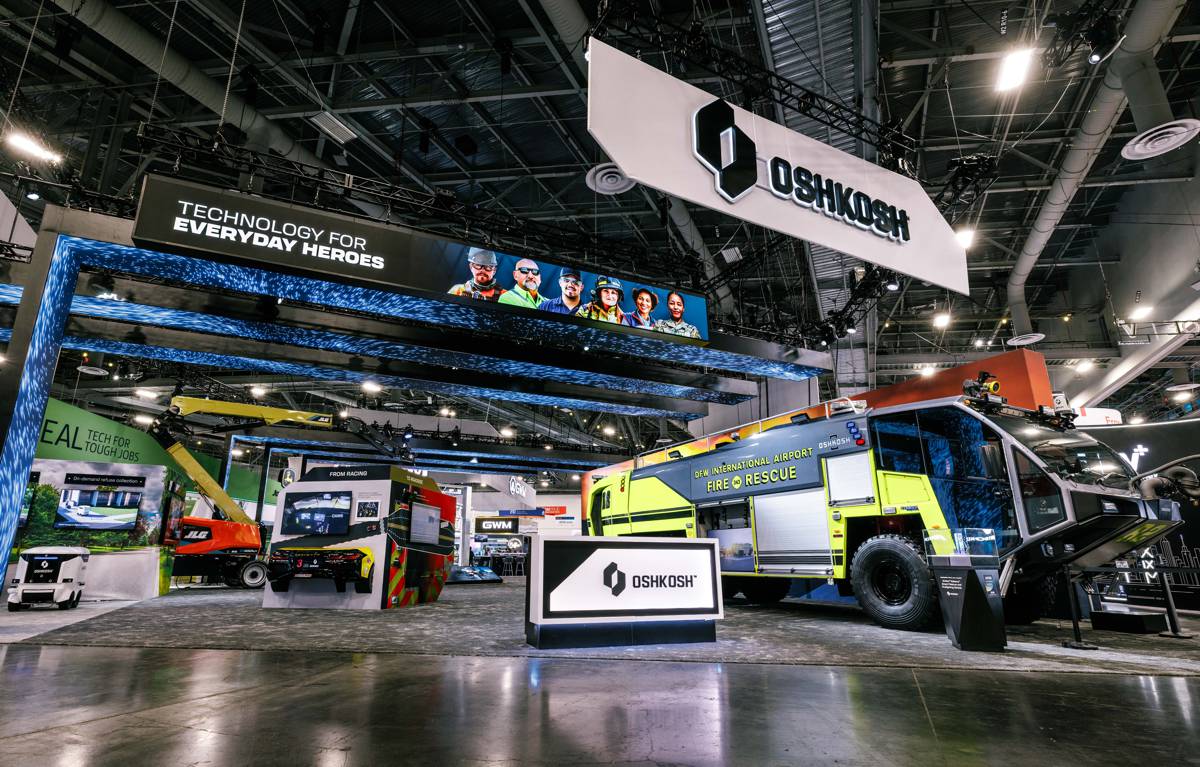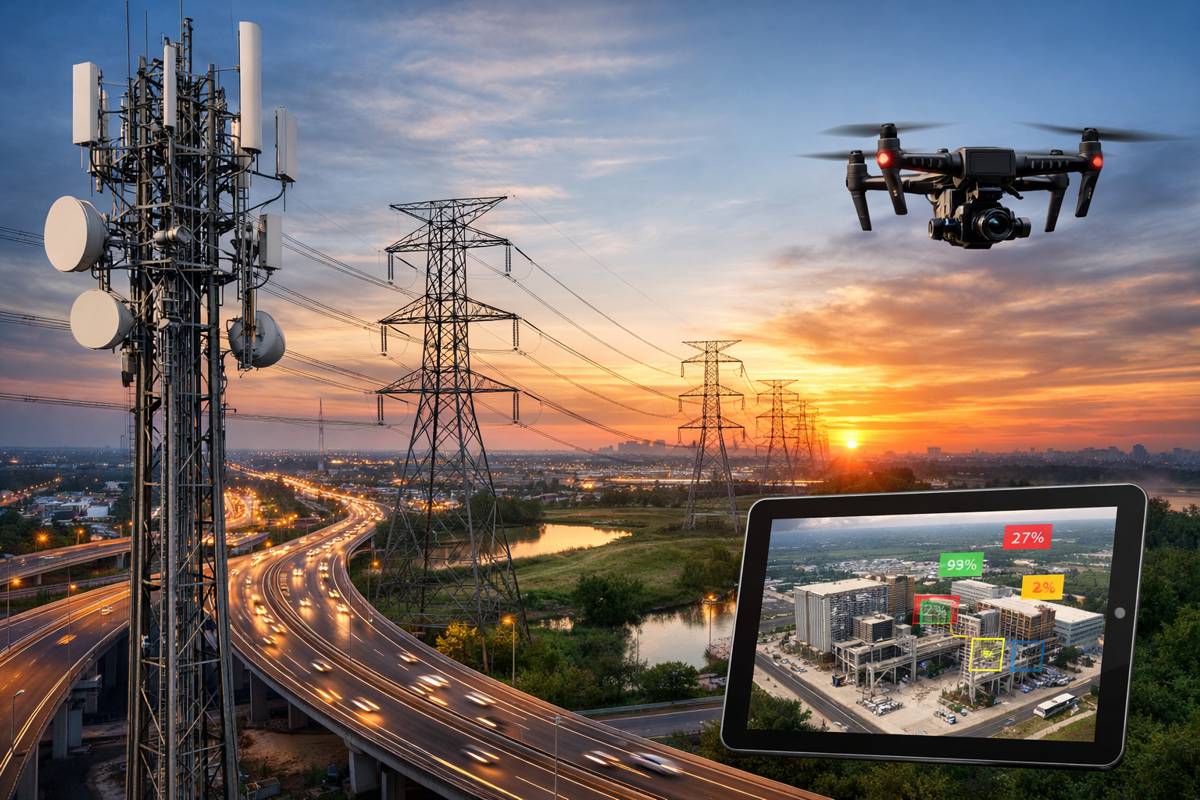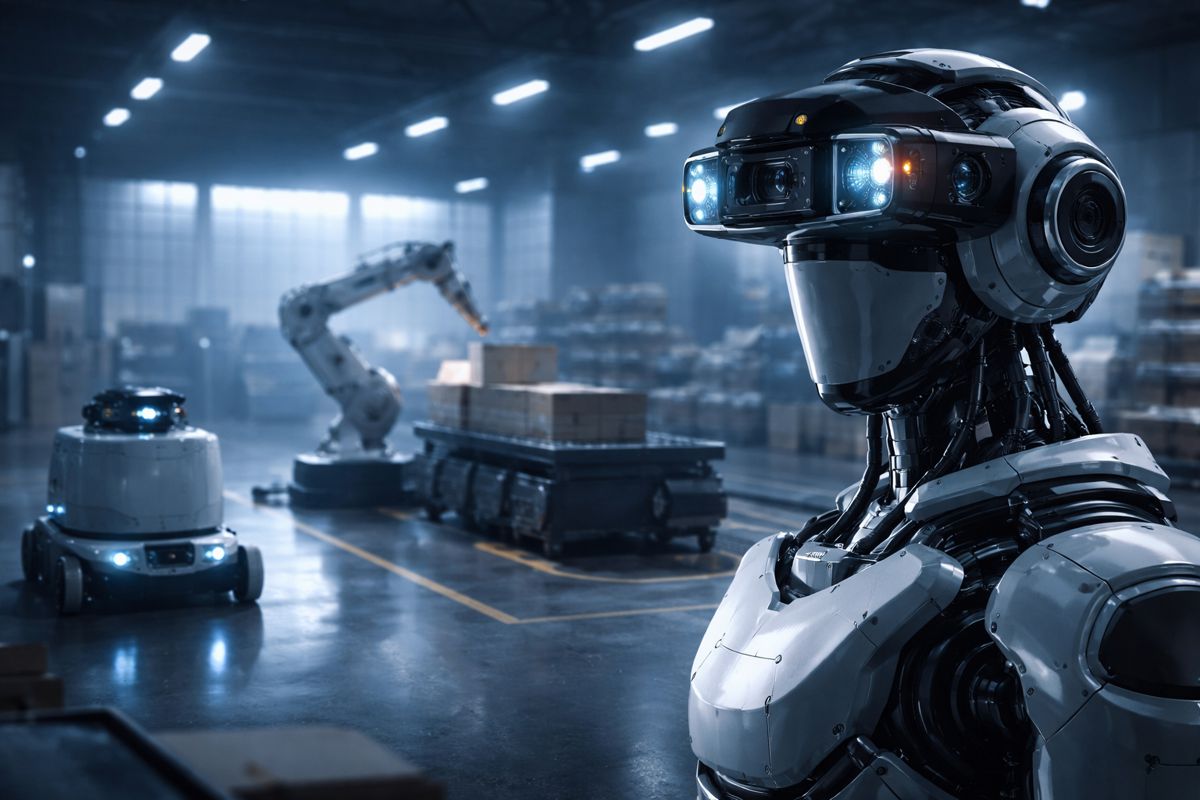The Rise of Construction Robots in 2024
The construction industry is undergoing a significant transformation as robotics and automation take centre stage.
Faced with rising material costs, skilled labour shortages, and increasing safety demands, construction firms are turning to advanced technology to stay competitive and ensure operational efficiency. The global construction robotics market, which was valued at $168.2 million in 2022, is projected to reach a staggering $774.6 million by 2032, indicating rapid growth and widespread adoption.
Solving Industry Challenges
The integration of robotics into construction isn’t just about adopting new tools; it’s about solving the industry’s most pressing problems.
- Addressing Labour Shortages: A perfect storm of challenges is accelerating the uptake of robotics in construction. The European Construction Industry Federation’s 2023 report highlights that 81% of companies are concerned about rising prices for materials and energy, while 67% face difficulties due to a shortage of skilled workers. These pressures, alongside an ageing workforce and dwindling interest from younger generations, have driven companies to seek innovative solutions. Robotics offers a way to maintain productivity, meet deadlines, and enhance safety in a demanding industry.
- Cutting Costs and Boosting Efficiency: By automating time-consuming processes, construction robots help firms reduce operational costs and improve efficiency. The precision of these machines also reduces material waste and ensures projects stay on budget. In an industry where labour can account for up to 30% of total expenses, these savings are significant.
- Enhancing Safety Standards: Construction sites are notoriously hazardous, with injury rates far higher than in other sectors. Robots can take over dangerous tasks, from working at heights to handling heavy loads, reducing the risk to human workers. The integration of AI further enhances safety by enabling real-time monitoring and predictive maintenance.
- Pushing Sustainability Efforts: With the construction industry responsible for a significant portion of global carbon emissions, sustainability is a major concern. Robots contribute to greener practices by optimising material use, reducing waste, and improving energy efficiency. Technologies like 3D printing allow for precise, eco-friendly construction, significantly lowering the carbon footprint.

Autonomous Vehicles and Construction Equipment
The adoption of autonomous vehicles (AVs) and automated construction equipment is transforming the way construction sites operate. From self-driving bulldozers to autonomous haul trucks, this technology is enhancing efficiency, safety, and precision in ways that were once considered the stuff of science fiction.
As these systems evolve, their impact on the construction industry is becoming increasingly significant, driving the shift towards smarter, more sustainable job sites.
The Current State of Autonomous Construction Equipment
Autonomous construction vehicles and equipment are designed to carry out repetitive, laborious tasks with minimal human intervention. These machines are equipped with advanced sensors, GPS systems, LiDAR, and AI-powered navigation, allowing them to perform complex operations with remarkable accuracy. Here’s how they’re being used in today’s construction landscape:
- Earthmoving and Excavation: Autonomous bulldozers, excavators, and graders are becoming more common on large-scale construction projects. Companies like Caterpillar and Komatsu have developed autonomous heavy machinery capable of conducting earthmoving operations, site grading, and trenching with minimal human oversight. These machines follow pre-programmed routes and make adjustments in real-time to ensure precision, reducing the need for manual control.
- Demolition Robots: Companies like Brokk are leading the way in remote-controlled demolition technology. Their robust demolition robots are used in hazardous environments, safely tearing down concrete and brick structures with precision. Equipped with tools like hydraulic breakers and shears, these robots allow operators to remain at a safe distance while carrying out complex demolition tasks.
- Material Transport: Autonomous haul trucks are revolutionising material transport on construction sites, particularly in large infrastructure projects and mining operations. These trucks are designed to move materials such as gravel, sand, and debris over long distances within job sites. By automating this process, companies can reduce human error, improve safety, and optimise logistics. For example, Komatsu’s Autonomous Haulage System (AHS) is widely used in mining, and its trucks have moved millions of tonnes of material with zero human intervention.
- Site Monitoring and Inspection: Autonomous rovers and mobile robots equipped with cameras and sensors are increasingly used for site monitoring and inspection. These machines can navigate construction sites independently, gathering data on progress, checking for compliance with safety standards, and even identifying potential issues before they become serious problems.
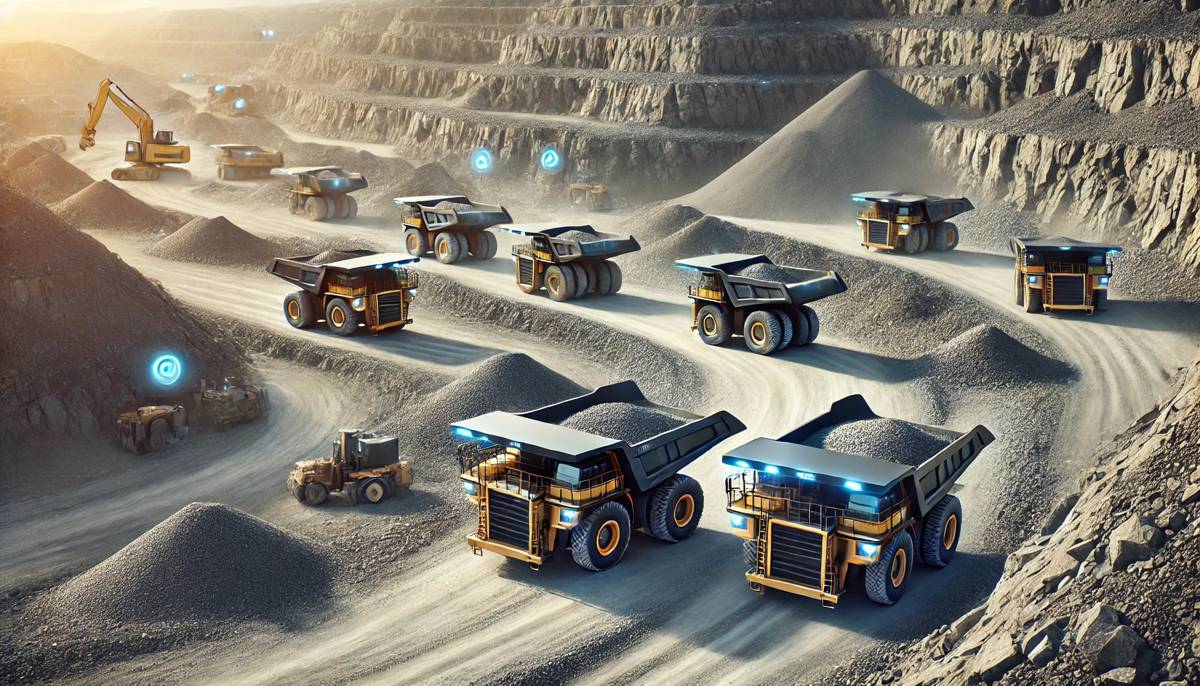
Companies Leading the Autonomous Construction Equipment Revolution
Several companies are at the forefront of developing autonomous vehicles and construction equipment that are setting new industry standards:
- Caterpillar: A leader in heavy machinery, Caterpillar has been a pioneer in autonomous construction technology. Their Command for Hauling system allows trucks to operate autonomously, reducing the need for human operators and increasing productivity. Caterpillar’s autonomous fleet is particularly well-suited for large-scale earthmoving and mining projects.
- Komatsu: Komatsu’s Intelligent Machine Control (iMC) and Autonomous Haulage System (AHS) have become benchmarks in the industry. These systems use GPS and LiDAR to guide machinery with precision, allowing for more accurate excavation, grading, and loading operations. Komatsu’s autonomous haul trucks are widely used in mines worldwide and have collectively moved over three billion tonnes of material without human drivers.
- Volvo Construction Equipment: Volvo has been actively developing autonomous solutions for construction, including self-driving haulers and electric-powered equipment. The company’s Electric Site project, which tested a fleet of autonomous and electric vehicles, demonstrated a significant reduction in carbon emissions and operating costs.
- Built Robotics: This innovative start-up specialises in retrofitting existing construction equipment with autonomous technology. By integrating advanced sensors and AI into traditional machinery, Built Robotics enables contractors to transform standard bulldozers and excavators into fully autonomous machines. Their focus on adaptability and cost-effectiveness has made them a key player in bringing autonomy to mid-sized construction firms.
- FBR (Fastbrick Robotics): Known for their Hadrian X bricklaying robot, FBR is at the forefront of automating masonry tasks. Hadrian X uses 3D CAD models to guide its bricklaying process, laying bricks with extreme accuracy and speed.
- Boston Dynamics: While better known for their humanoid and quadrupedal robots, Boston Dynamics is exploring applications for their robots in construction. Their agile robots can navigate rough terrain, making them ideal for site inspection and potentially hazardous tasks.
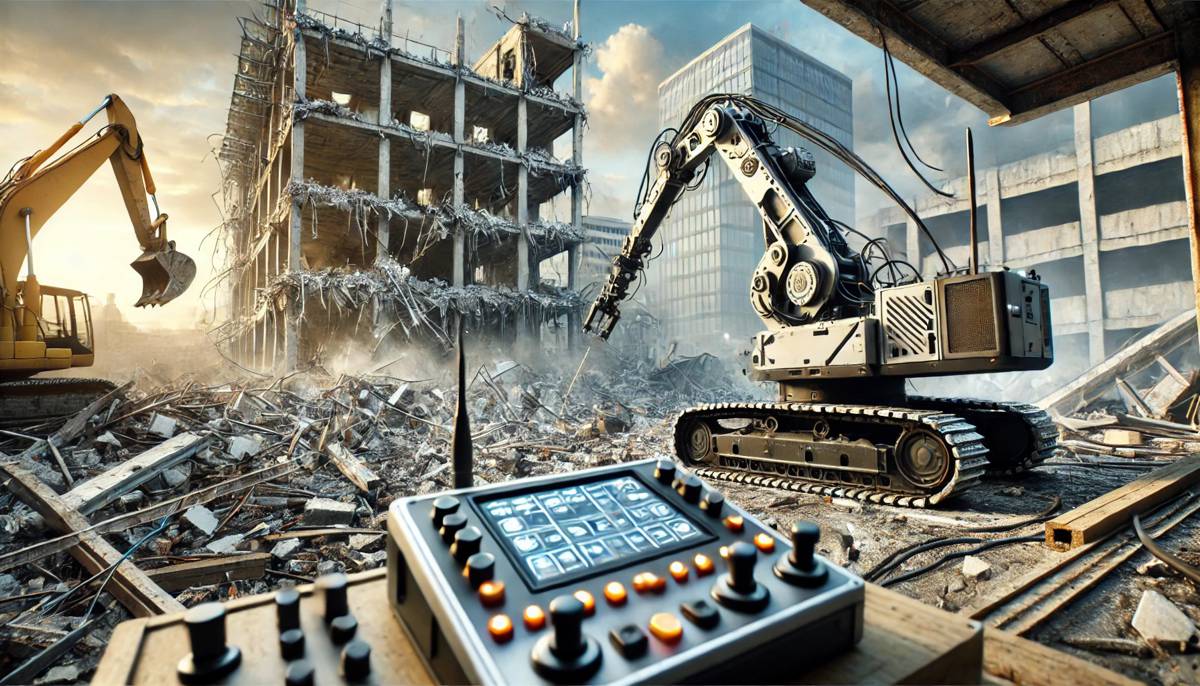
The Impact of Autonomous Construction Equipment
The integration of autonomous vehicles and equipment is having a profound impact on the construction industry, bringing benefits that extend beyond mere automation. Here’s how this technology is reshaping the sector:
- Increased Efficiency and Productivity: Autonomous equipment can work continuously without breaks, fatigue, or human error, significantly boosting productivity. These machines can operate in harsh or dangerous environments and maintain high levels of accuracy, ensuring that projects stay on schedule and within budget. For instance, autonomous graders and bulldozers can achieve perfect slopes and grades with minimal rework, leading to faster project completion.
- Improved Safety on Job Sites: Construction remains one of the most hazardous industries, with high rates of injury and fatality. Autonomous vehicles reduce the need for human workers to perform dangerous tasks, such as operating heavy machinery in hazardous areas or driving trucks on uneven terrain. By removing workers from the riskiest activities, these systems contribute to safer job sites and lower accident rates.
- Cost Reduction: Labour shortages are a significant issue in the construction industry, driving up costs and delaying projects. Autonomous equipment reduces reliance on human labour, particularly for repetitive or mundane tasks. In addition, by optimising operations and minimising errors, these machines reduce the need for costly rework and material waste.
- Sustainability and Environmental Impact: Autonomous vehicles are also contributing to more sustainable construction practices. Companies like Volvo are leading the way with electric-powered autonomous equipment that reduces greenhouse gas emissions. By operating more efficiently and precisely, autonomous machines also minimise fuel consumption and reduce the overall carbon footprint of construction projects.
- Data-Driven Decision Making: Autonomous equipment generates vast amounts of data that can be analysed to improve decision-making on-site. Real-time data on machine performance, material movement, and site conditions allows for more accurate forecasting and better resource management. As AI and machine learning continue to evolve, these data insights will become increasingly valuable in optimising construction processes.
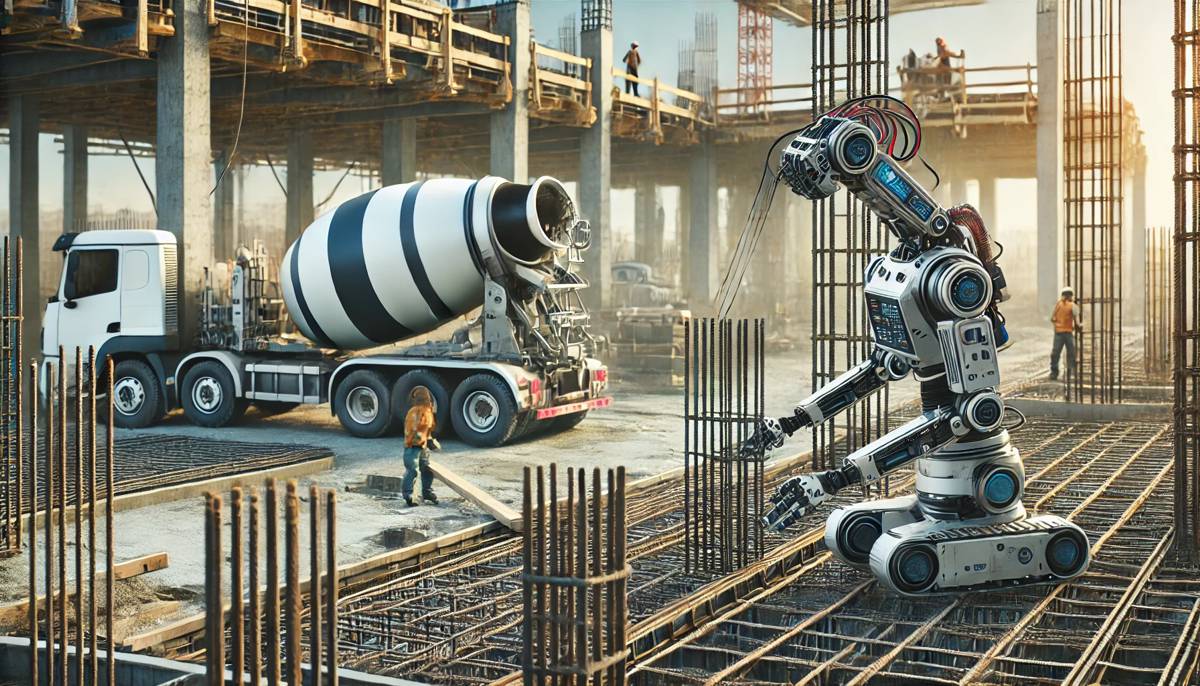
The Future of Autonomous Construction Equipment
The future of autonomous vehicles and equipment in construction is bright, with advancements in AI, machine learning, and sensor technology driving further innovation. Here’s what we can expect:
- Fully Autonomous Job Sites: The concept of a fully autonomous construction site is becoming more realistic as companies integrate multiple types of autonomous equipment into their operations. In the future, entire fleets of self-driving machinery could work together seamlessly, coordinating tasks without human intervention.
- Collaborative Robotics: As autonomy becomes more sophisticated, machines will increasingly collaborate with each other, sharing data and adjusting workflows in real-time. This level of coordination will allow for faster, more efficient operations and could lead to breakthroughs in large-scale infrastructure projects.
- Greater Adoption of Electric Autonomous Equipment: With sustainability becoming a priority, the trend towards electric-powered autonomous equipment will continue. The combination of autonomy and electrification offers a powerful solution for reducing emissions and improving efficiency.
- Scalable Autonomous Solutions for Smaller Projects: While autonomous equipment is currently more common in large-scale operations like mining and infrastructure, advances in retrofitting and cost-effective solutions will make this technology accessible to smaller contractors and mid-sized projects. This democratisation of autonomy will have a transformative effect on the construction industry as a whole.
The rise of autonomous vehicles and equipment marks a pivotal moment for the construction industry. By enhancing efficiency, improving safety, and reducing costs, these technologies are not only solving some of the sector’s biggest challenges but also setting new standards for what’s possible.
As the adoption of autonomous systems grows, the construction sites of the future will be defined by precision, collaboration, and sustainability, paving the way for a smarter, safer, and more efficient industry.

Powering Automated Prefabrication and On-Site Construction
Industrial robots are making a substantial impact on the construction industry, particularly in automated prefabrication and on-site construction. As the sector faces mounting pressures from labour shortages, tight project timelines, and the need for higher efficiency, these robots are stepping in to bridge the gap.
Their ability to deliver precise, consistent results makes them a game-changer in both off-site manufacturing facilities and on construction sites.
Automated prefabrication involves producing building components—such as walls, beams, and entire modules—in a controlled factory environment before transporting them to the construction site for assembly. This method is gaining popularity because it reduces construction time, improves quality, and minimises waste. Industrial robots are central to this process, bringing a level of precision and speed that manual labour simply cannot match.

Robots in Prefabrication
- 3D Printing and Assembly: Industrial robots are used for 3D printing concrete, steel, and composite materials into building components. Companies like Apis Cor are pioneering this technology, using robotic arms to print entire structures, from residential homes to commercial buildings. These robots ensure uniformity and accuracy, reducing the need for rework and cutting down material waste.
- Automated Welding and Cutting: Prefabrication facilities often rely on robotic systems for tasks like welding steel frames and cutting materials to precise specifications. Robots such as those from ABB and Fanuc are widely used in these applications, providing consistent quality and high throughput.
- Modular Construction: In modular construction, entire sections of a building are assembled in a factory setting using industrial robots. This process not only accelerates project timelines but also improves safety by moving most construction activities away from potentially hazardous sites. Companies like Sekisui House in Japan have fully automated factories where robots handle everything from assembling room modules to applying finishes, ensuring each unit is built to exact standards.
The benefits of using industrial robots in automated prefabrication are clear:
- Speed and Efficiency: Robots work continuously without breaks or fatigue, dramatically increasing the speed of production. This efficiency is particularly valuable in projects with tight deadlines or large-scale housing developments.
- Quality Control: By automating repetitive and precision tasks, industrial robots reduce the risk of human error. The result is consistently high-quality components that meet stringent industry standards.
- Cost Reduction: Prefabrication with robots lowers overall construction costs by minimising material waste, reducing rework, and optimising resource usage. These savings can be reinvested into other aspects of the project, such as design enhancements or sustainable materials.
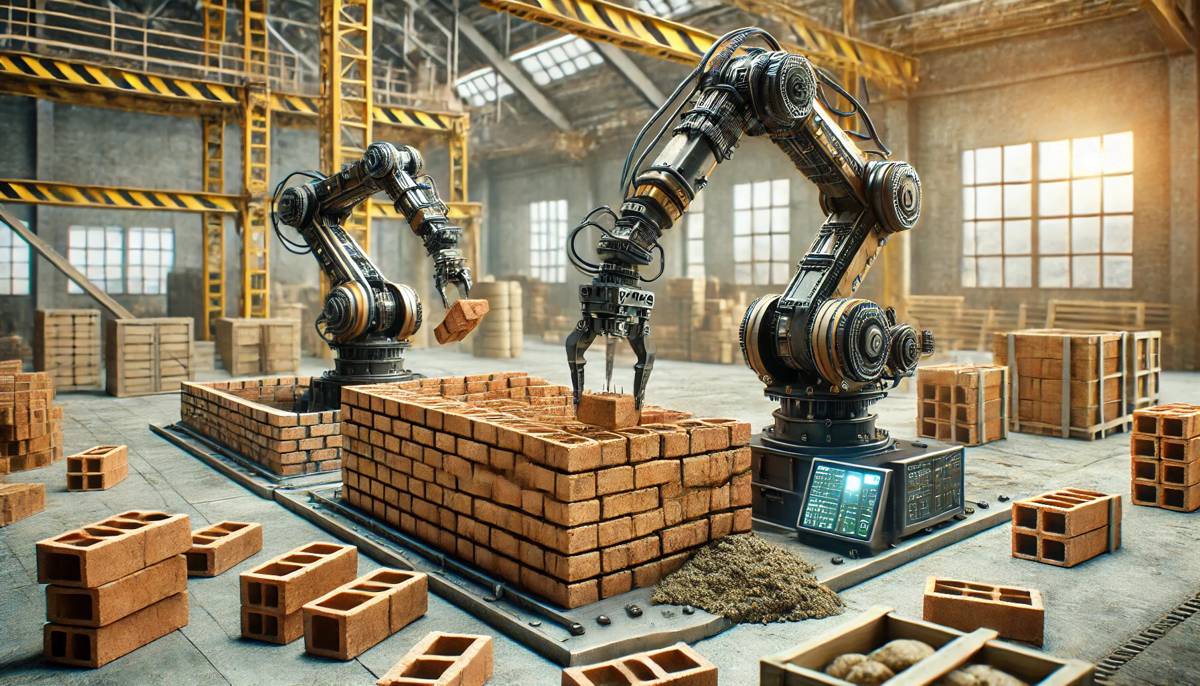
On-Site Construction
While prefabrication has seen widespread adoption, the deployment of industrial robots directly on construction sites is still emerging. However, the potential impact of on-site robotics is significant. These robots are designed to handle tasks that are repetitive, dangerous, or require a high degree of precision—tasks that are difficult to achieve consistently through manual labour alone.
Key Applications of Industrial Robots On-Site:
- Bricklaying and Masonry: Robots like the Hadrian X and SAM (Semi-Automated Mason) are transforming masonry work. SAM, for example, can lay up to 300 bricks per hour, which is about four times the rate of a human bricklayer. These robots not only speed up construction but also improve accuracy, ensuring walls are built to precise measurements and reducing the likelihood of costly mistakes.
- Drywall Finishing: The world’s first drywall finishing robot designed by Canvas uses robotic precision to spray-apply all of the joint compound onto the wall in a single step, reducing the time required to finish a wall from five days, in a traditional manual process, to just two days with one day for mud application and one day for sanding.
- Concrete Printing and Structural Fabrication: On-site 3D printing of concrete structures is becoming more common, allowing for the creation of complex designs that would be difficult or impossible with traditional methods. Robots like those from Contour Crafting are capable of printing walls and even entire buildings directly on-site, drastically reducing construction time and labour requirements.
- Rebar Tying and Structural Assembly: Automated rebar-tying robots like Tybot are increasingly used in large infrastructure projects. Tybot autonomously ties rebar at precise intervals, ensuring consistency and speeding up the preparation of foundations for concrete pours. This is particularly useful in bridge and tunnel construction, where accuracy and strength are paramount.
- Inspection and Quality Assurance: Mobile robots equipped with cameras and sensors are being deployed to inspect work completed by both humans and machines. These robots can autonomously navigate a construction site, checking for defects, verifying alignment, and ensuring that all components meet the required specifications. Their ability to perform repetitive inspections with unwavering accuracy ensures that quality is maintained throughout the project lifecycle.

The Impact of Industrial Robots
The deployment of industrial robots in both prefabrication and on-site construction is revolutionising the industry in several key ways:
- Consistency and Precision: Robots bring unmatched precision to construction tasks, ensuring that every component is fabricated or installed exactly as intended. This consistency leads to higher-quality structures and fewer defects, ultimately improving the longevity and safety of buildings.
- Labour Efficiency: With labour shortages posing a significant challenge, industrial robots can fill gaps by taking on tasks that are repetitive or physically demanding. This allows human workers to focus on higher-value activities, such as project management and design optimisation.
- Faster Project Delivery: Whether in prefabrication or on-site tasks, industrial robots accelerate the construction process. By automating time-consuming activities, robots help keep projects on schedule, even when faced with tight deadlines.
- Reduced Costs and Material Waste: Robots optimise material usage, reducing waste and lowering overall construction costs. For example, 3D printing and robotic assembly techniques use only the materials necessary for each task, leading to more sustainable construction practices.
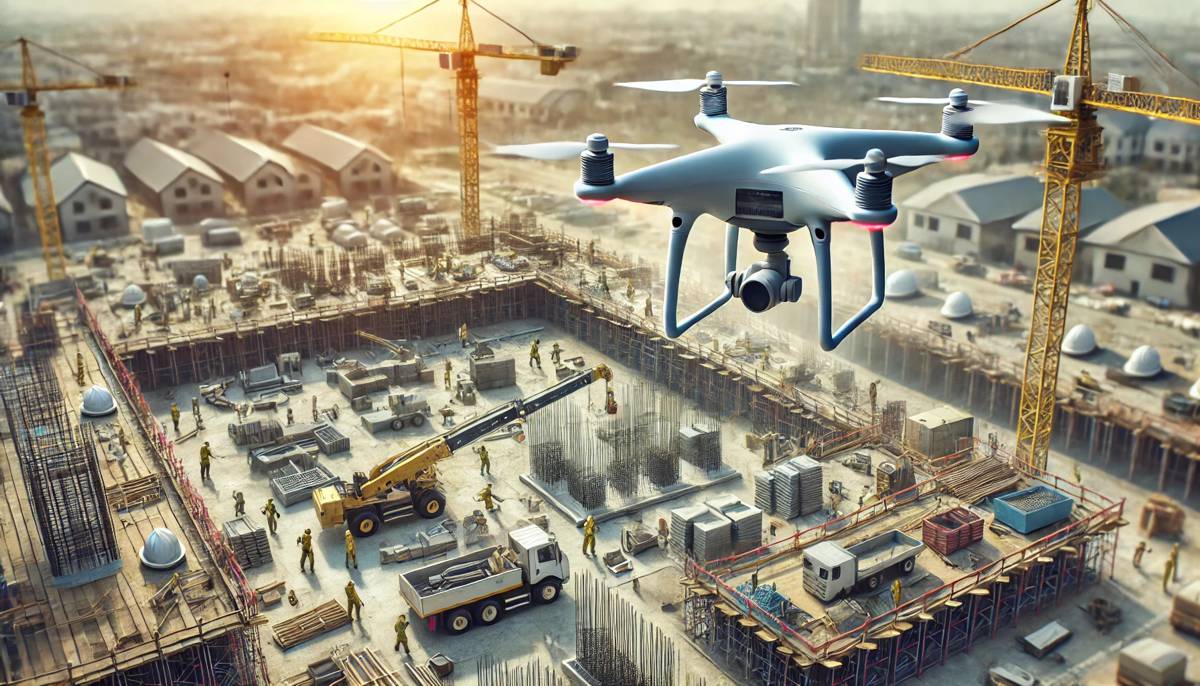
The Future of Industrial Robotics in Construction
Looking ahead, the role of industrial robots in construction is set to expand even further. Here are some trends to watch:
- Integration with AI and Machine Learning: As AI algorithms become more sophisticated, industrial robots will be able to learn from past projects and adjust their processes in real-time for better efficiency and accuracy.
- Collaborative Robots (Cobots): Cobots designed to work alongside human workers will become more prevalent, handling tasks that require a blend of human creativity and robotic precision. These robots will further enhance safety and productivity on job sites.
- Increased Automation in Prefabrication: The prefabrication sector will continue to see growth as more companies invest in fully automated factories capable of producing entire buildings in controlled environments. The ability to deliver high-quality, ready-to-assemble components will make modular construction the go-to choice for large-scale and fast-track projects.
- Advanced On-Site Robotics: Expect to see more robots capable of performing complex on-site tasks, from automated concrete pouring systems to robots that can autonomously build entire structures with minimal human oversight.
Industrial robots are playing a transformative role in both automated prefabrication and on-site construction. By delivering unprecedented levels of precision, speed, and efficiency, these machines are setting new standards for quality and performance in the industry. As the technology continues to evolve, the widespread adoption of industrial robotics will drive the construction sector toward a future defined by smarter, faster, and more sustainable building practices.

Robotics in Construction
The construction industry is on the cusp of a technological revolution driven by robotics and automation. From humanoid robots capable of mimicking human movements to advanced prefabrication systems that streamline the building process, these innovations are not just trends—they are the future of construction.
Companies that embrace these technologies will not only gain a competitive edge but also pave the way for a safer, more efficient, and more sustainable industry.









